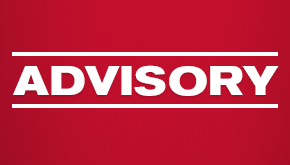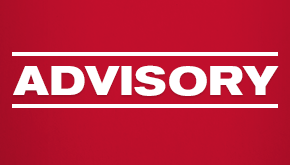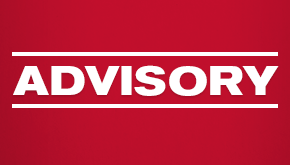For Your Benefit Newsletter, December 2021
Many Retirement and Welfare Plan Limits Increase for 2022
On Nov. 10, 2021, the Internal Revenue Service announced many of the 2022 limits for retirement and welfare plans. Many retirement plan limits increased from 2021, including the limit on contributions to 401(k) and 403(b) plans, increasing from $19,500 in 2021 to $20,500 in 2022. In addition, for purposes of withholding and paying FICA and FUTA taxes, the Social Security Wage Base is increasing from $142,800 in 2021 to $147,000 in 2022.
Key retirement plan limits:
Limit |
2020 |
2021 |
2022 |
Social Security Wage Base |
$137,700 |
$142,800 |
$147,000 |
Elective Deferral/Roth contribution limit for 401(k), 403(b) and 457 plans |
$19,500 |
$19,500 |
$20,500 |
Catch-up contribution limit for employees age 50 and over for 401(k), 403(b) and 457 plans |
$6,500 |
$6,500 |
$6,500 |
IRA contribution limit |
$6,000 |
$6,000 |
$6,000 |
IRA catch-up for individuals aged 50 and over |
$1,000 |
$1,000 |
$1,000 |
415 limit for defined contribution plans |
$57,000 |
$58,000 |
$61,000 |
Compensation limit for qualified plans |
$285,000 |
$290,000 |
$305,000 |
Highly compensated employee |
$130,000 |
$130,000 |
$135,000 |
Welfare Plan Limits:
Limit |
2020 |
2021 |
2022 |
HSA annual contribution limit: |
|||
Self-only coverage |
$3,550 |
$3,600 |
$3,650 |
Family coverage |
$7,100 |
$7,200 |
$7,300 |
HSA catch-up contribution (age 55 and over) |
$1,000 |
$1,000 |
$1,000 |
High deductible health plan (HDHP) minimum deductible requirements: |
|||
Self-only coverage |
$1,400 |
$1,400 |
$1,400 |
Family coverage |
$2,800 |
$2,800 |
$2,800 |
HDHP annual out-of-pocket maximum: |
|||
Self-only coverage |
$6,900 |
$7,000 |
$7,050 |
Family coverage |
$13,800 |
$14,000 |
$14,100 |
Health Flexible Spending Account Limit |
$2,750 |
$2,750 |
$2,850 |
These changes will be effective for plan years that begin on or after Jan. 1, 2022.
Employee Retention Credit Remains Viable Despite Recent Change
Although there have been some recent changes to the Employee Retention Credit (ERC), there remain considerable benefits available to eligible employers.
Congress originally enacted the ERC in the Coronavirus Aid, Relief and Economic Security (CARES) Act in March of 2020 to encourage employers to hire and retain employees during the pandemic. At that time, the ERC applied to wages paid after March 12, 2020, and before Jan. 1, 2021. However, Congress later modified and extended the ERC to apply to wages paid before July 1, 2021. Congress subsequently extended and modified the ERC to apply to wages paid after June 30, 2021, and before Jan. 1, 2022. Most recently, Congress passed the Infrastructure Investment and Jobs Act (IIJA) which retroactively terminated the ERC limiting the credit to qualified wages paid through the third calendar quarter of 2021 (ending Sept. 30, 2021) for most businesses. In other words, the ERC is not available for the fourth quarter of 2021.
Thus, an eligible employer can now claim the refundable ERC against “applicable employment taxes” equal to 70% of the qualified wages it pays to employees in the first three quarters of 2021. Except as discussed below, qualified wages are generally limited to $10,000 per employee per calendar quarter in 2021. Thus, the maximum ERC amount available remains $7,000 per employee per calendar quarter or $21,000 per employee in 2021. For purposes of the ERC, a qualified employer is eligible if it experiences a significant decline in gross receipts or a full or partial suspension of business due to a government order. There is a common misconception that if your business is performing better in 2021 than it did in 2019 that the business is automatically not eligible for the ERC in 2021. This is NOT accurate, as employers who can demonstrate a material adverse impact caused by issued governmental orders may qualify for the ERC, even if the business as a whole is performing better in 2021 compared to 2019. Employers with up to 500 full-time employees (i.e., small employers) in 2019 can claim the credit without regard to whether the employees for whom the ERC is claimed actually perform services. Employers with more than 500 full-time employees (i.e., a large employer) in 2019 can only claim the ERC with respect to employees that do not perform services. Employers who received a Paycheck Protection Program (PPP) loan in 2020 or 2021 may still be able to claim the ERC. Nonetheless, the same wages cannot be used both for seeking forgiveness of the PPP loan and claiming the ERC.
Despite the recent elimination of the ERC for the fourth quarter of 2021, the ERC still presents real tax savings opportunities for many businesses. If you have any questions whether your business could qualify for these ERCs, please contact us.
COVID-19 Personal Protective Equipment Considered an Eligible Expense under FSAs, HRAs and HSAs
In IRS Announcement 2021-7, the Internal Revenue Service determined that amounts paid for personal protective equipment (PPE) such as masks, hand sanitizer and sanitizing wipes, for the primary purpose of preventing the spread of COVID-19, are treated as amounts paid for medical care under § 213(d) of the Internal Revenue Code. As such, they are eligible for reimbursement under health flexible spending arrangements, Archer medical savings accounts, health reimbursement arrangements or health savings accounts. Sponsors of such arrangements which currently do not permit reimbursement of COVID-19 PPE may be amended to provide for reimbursements of these expenses incurred for any period beginning on or after Jan. 1, 2020. Such amendments, including those with retroactive effect as permitted by the announcement back to Jan. 1, 2020, must be adopted by Dec. 31, 2022. Additionally, the applicable plan must be operated consistent with the terms of the amendment beginning with the effective date of the amendment and continuing through the date the amendment is adopted. To claim reimbursement, a plan participant must incur the expenses for COVID-19 PPE for use by the participant, the participant’s spouse or dependents. Additionally, the expenses cannot already be compensated for by insurance.
Key Updates for Preapproved Retirement Plans
Hardship Distribution Requirements. An employer that sponsors a 401(k) plan is permitted but not required to allow participants to take an in-service distribution due to financial hardship, which is also known as a hardship distribution. In 2019, the IRS issued rules that impact the hardship distribution rules that apply to qualified retirement plans, including 401(k) plans. For employers who sponsor a 401(k) plan, the plan is required to be updated to comply with IRS rules by Dec. 31, 2021.
Cycle 3 Restatement for Defined Contribution Plans. For employers who have adopted a preapproved 401(k) retirement plan, the deadline to adopt new “Cycle 3” plan documents is July 31, 2022. Employers that have adopted a preapproved defined contribution retirement plan may want to request the status of the Cycle 3 restatements from the benefits vendor who provides the plan.
Center for Medicare & Medicaid Services (CMS) Memorandum Details Disclosure Notice Requirements for Surprise Billing Effective Jan. 1, 2022
The No Surprises Act, enacted as part of the Consolidated Appropriations Act of 2021 (CAA), contains multiple protections against the practice of surprise billing or “balance billing,” including the requirement of new transparency disclosures effective Jan. 1, 2022. Congress passed the No Surprises Act with the intention of protecting against certain surprise bills for non-emergency care provided by out-of-network providers at in-network facilities; emergency care; and air ambulance services from out-of-network providers. Because the health plan or health insurance issuer does not usually cover the entire out-of-network cost for such care, the out-of-network provider bills the patient for the difference between the billed charge and covered amount, a practice known as “balance billing.”
For plan or policy years beginning on or after Jan. 1, 2022, group health plans and insurers must disclose the prohibition on surprise billing and the entities to contact in the event of a violation.
On Oct. 25, 2021, the CMS issued a memorandum detailing the contents of the required disclosure notices. The Public Health Service Act (PHS Act) section 2799A-5(c), Internal Revenue Code (Code) section 9820(c) and Employee Retirement Income Security Act (ERISA) section 720(c), as part of the No Surprises Act, require group health plans and issuers of group or individual health insurance coverage to make publicly available, post on a public website of the plan or issuer, and include on each explanation of benefits (EOB) the following information for an item or service in plain language:
- The restrictions on balance billing in certain circumstances
- Any applicable state law protections against balance billing
- The requirements under the applicable statutes
- Information on contacting appropriate state and federal agencies in the case that an individual believes that a provider or facility has violated the restrictions against balance billing
The CMS memo references a Model Notice issued by the Departments of Health and Human Services, Labor and the Treasury that plans and issuers may, but are not required to, use to satisfy the disclosure requirements of the act. The Departments will consider use of the Model Notice to be good faith compliance.
CMS has created a website containing information about the surprise billing rules which is to be referenced on the disclosure notice as well as the telephone line operated by HHS beginning on Jan. 1, 2022, which will route complaints by individuals regarding potential violations of the CAA to the appropriate agency. The website functionality for complaints inquiry and triage will not be fully operational until January 2022. The HHS phone number (1-800-985-3059) should likewise not be included in any plan documents for plan or policy years beginning before Jan. 1, 2022.
The agencies may provide more detailed information in future guidance or regulations, but in the meantime, group health plans and insurers should use the Model Notice and accompanying contact details to demonstrate good faith compliance with the Act.


































